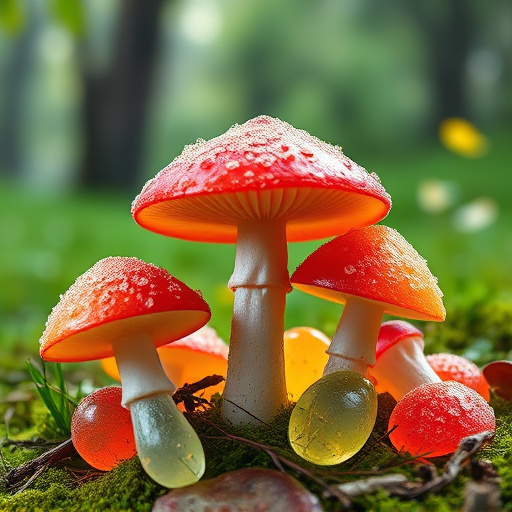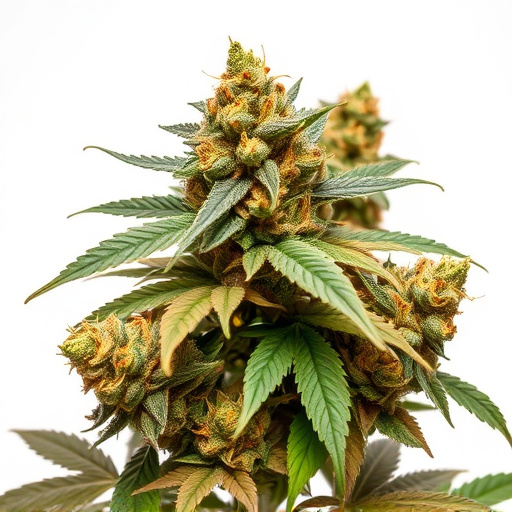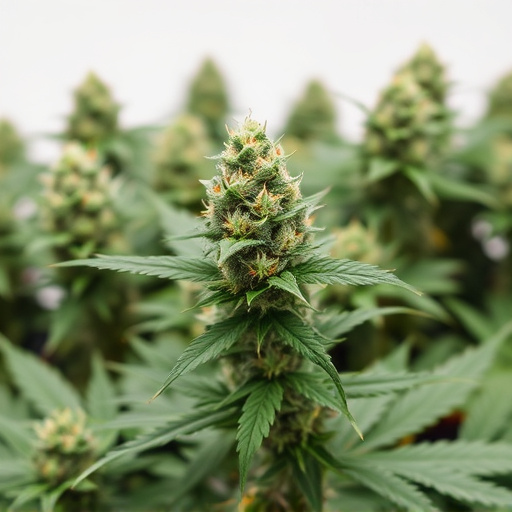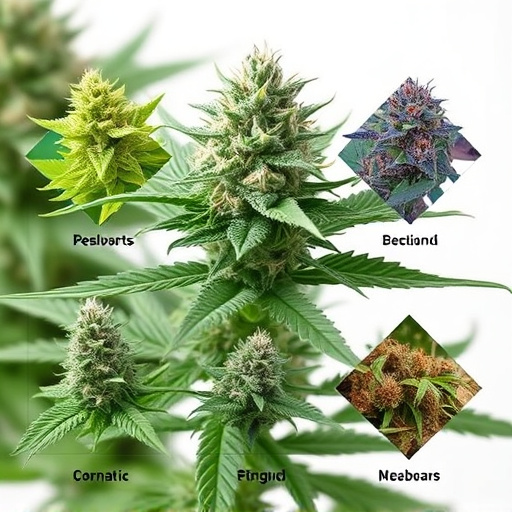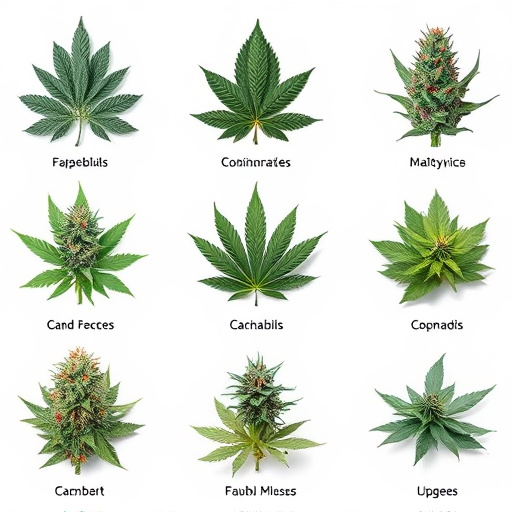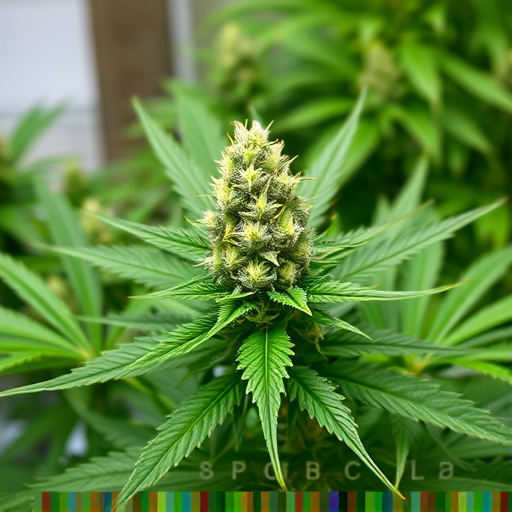Terpenes, aromatic compounds in cannabis, play a crucial role in shaping the unique characteristics and effects of various types of cannabis strains. With over 100 known terpenes, each with distinct properties, understanding them is key to navigating the cannabis landscape. Terpenes interact with cannabinoids like THC and CBD, influencing potency and overall experience. For instance, myrcene offers sedative and relaxing effects, while limonene induces energy and euphoria. Exploring these aromatic compounds allows consumers to make informed choices, tailoring their cannabis consumption for desired effects and enhancing enjoyment of different types of cannabis strains.
Discover the aromatic secret behind diverse cannabis experiences. This article explores terpenes, the fragrant compounds responsible for the unique effects of various cannabis strains. From uplifting citrus notes to relaxing pine aromas, terpenes play a pivotal role in shaping the plant’s therapeutic potential. We’ll delve into how these compounds interact with cannabinoids, creating a symphony of effects that cater to different preferences. Uncover why understanding terpenes is key when navigating the vast spectrum of types of cannabis strains.
- Understanding Terpenes: The Aromatic Compounds in Cannabis
- The Role of Terpenes in Different Types of Cannabis Strains
- How Terpenes Interact with Cannabinoids to Create Unique Effects
Understanding Terpenes: The Aromatic Compounds in Cannabis
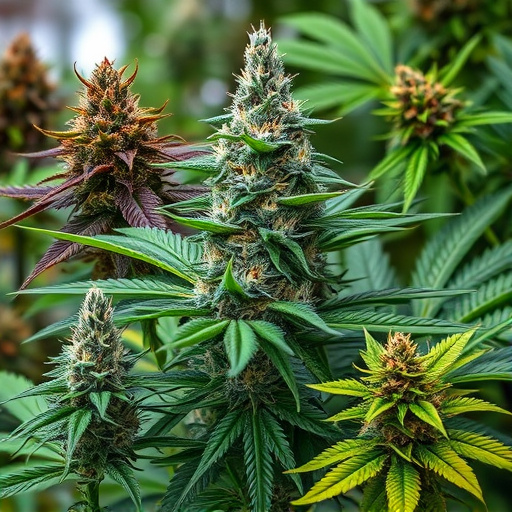
Terpenes, often referred to as aromatic compounds, are a diverse group of chemical substances that play a significant role in shaping the unique characteristics and effects of cannabis. These volatile oils are naturally produced by various plants, including cannabis, and are responsible for the distinct flavors and aromas we associate with different types of cannabis strains. With over 100 known terpenes found in cannabis, each offering its own set of properties, understanding their presence is key to navigating the complex world of this plant.
The impact of terpenes on cannabis effects is profound. They interact synergistically with cannabinoids, such as THC and CBD, influencing both their potency and overall experience. For instance, myrcene, a common terpene in many cannabis strains, is known for its sedative and relaxing properties, often contributing to the ‘indica-like’ effects associated with certain types of cannabis. Conversely, limonene, with its citrusy scent, can induce feelings of energy and euphoria, giving a more ‘sativa’ experience. Exploring these aromatic compounds allows consumers to make informed choices, tailoring their cannabis consumption to desired effects and enhancing the overall enjoyment of different strains.
The Role of Terpenes in Different Types of Cannabis Strains
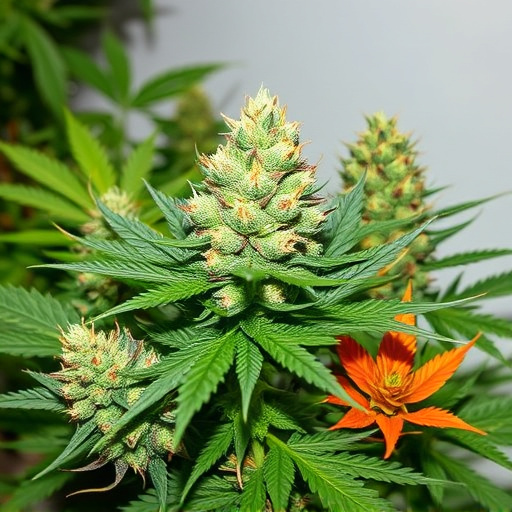
Terpenes play a pivotal role in shaping the unique effects and experiences associated with different types of cannabis strains. These aromatic compounds, naturally occurring in cannabis plants, contribute to the plant’s overall flavor profile and also interact with the active cannabinoids like THC and CBD. Each terpene has distinct properties that can influence the mental and physical sensations users experience after consumption. For instance, myrcene, with its earthy and musky notes, is often linked to relaxation and sleepiness, making it prevalent in indica-dominant strains known for their calming effects. On the other hand, limonene, carrying bright citrusy aromas, is associated with uplifting and energizing properties, commonly found in sativa-rich strains that induce focus and creativity.
The diversity of terpene profiles across types of cannabis strains offers users a wide range of experiences tailored to their preferences. Some strains may boast high levels of beta-caryophyllene (BCP), known for its anti-inflammatory and pain-relieving effects, making them appealing for medical users seeking relief from chronic conditions. Other varieties might feature terpinolene, renowned for its potential anxiety-reducing properties, offering a more balanced and serene high. This intricate interplay between terpenes and cannabinoids showcases the complexity of cannabis, ensuring that different strains cater to diverse consumer needs and preferences in terms of effect and aroma.
How Terpenes Interact with Cannabinoids to Create Unique Effects

Terpenes, aromatic compounds found in many plants, play a significant role in shaping the effects of cannabis. When terpenes interact with cannabinoids, like THC and CBD, they create a complex interplay that results in unique experiences for consumers. Each type of terpene offers distinct attributes, influencing mood, perception, and overall effects. For instance, myrcene, commonly found in many cannabis strains, is known to induce relaxation and sleepiness due to its sedative properties. On the other hand, limonene boosts energy levels and enhances focus, providing a more uplifting and energizing experience.
This interaction between terpenes and cannabinoids occurs through various mechanisms. Terpenes can modulate the potency of cannabinoids, alter their absorption rates, and even change how they interact with our endocannabinoid system. The combination of specific terpene profiles within different types of cannabis strains contributes to the diverse range of effects felt by consumers. Understanding these interactions allows users to make informed choices based on desired outcomes, whether seeking relaxation or a more invigorating high.
Terpenes, the aromatic compounds in cannabis, play a pivotal role in shaping the unique effects experienced by users across various types of cannabis strains. By interacting with cannabinoids, terpenes modulate the overall experience, offering a diverse range of effects that cater to different preferences. Understanding this dynamic interaction allows for a more nuanced appreciation of how terpene profiles contribute to the complex tapestry of cannabis effects. Whether seeking relaxation or energy, knowledge of terpenes empowers users to navigate and select strains that align with their desired outcomes.




